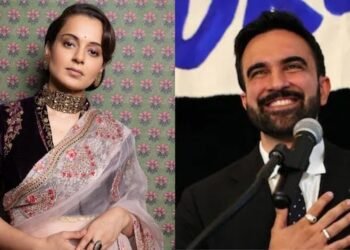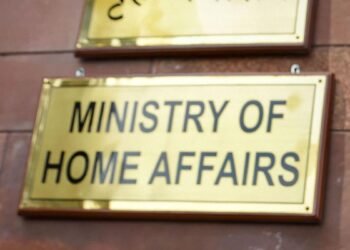Amid tariff threats, record exports, and geopolitical maneuvering, the U.S. and India inch closer to a high-stakes trade agreement—with agriculture and autos still major sticking points.
BY PC Bureau
In a burst of characteristic rhetoric, U.S. President Donald Trump has reignited speculation about a “very big” trade deal with India, raising both hopes and eyebrows. Speaking at the “Big Beautiful Bill” event at the White House on June 26, 2025, Trump claimed that the U.S. was “going to open up India,” implying major strides toward a bilateral agreement. His assertion comes on the heels of months of tough negotiations, tariff disputes, and promises of slashing duties to “literally no tariffs.” But what lies beneath these bold claims—and how close is the U.S. to sealing a transformative deal with India?
The U.S.-India trade relationship has grown significantly, with bilateral trade reaching approximately $129 billion in 2024, positioning the U.S. as India’s top trading partner. However, frictions over India’s traditionally high tariffs have remained a thorn. In April 2025, Trump escalated tensions by imposing tariffs of up to 27% on Indian imports under his “Liberation Day” trade policy. A temporary 90-day pause followed, with a July 9 deadline for reaching a compromise.
READ: Congress Seeks Fresh Assembly Poll in Conflict-Hit Manipur
India has responded with cautious engagement. Foreign Minister S. Jaishankar has reiterated India’s stance on “mutual benefit,” calling the negotiations “complicated” and far from complete. He pushed back against Trump’s May 15 claim—made during a business forum in Doha—that India had agreed to eliminate tariffs entirely. “Nothing is decided till everything is,” Jaishankar said, signaling India’s unwillingness to concede without equivalent gains.
🚨“We’ve signed with China Yesterday… We’ve one coming up maybe with INDIA 🇮🇳,A VERY BIG ONE ,We’re gonna open up India”
Trump hinted an upcoming TRADE DEAL WITH INDIA 🇮🇳 #Trump #TrumpTariffs #IndiaUSA #Trade #Modi #Economy #tariffs pic.twitter.com/H0c8epgE5v
— Everyday Pursuits (@evrydaypursuit) June 27, 2025
Trump’s Claims: Rhetoric or Real Progress?
Trump has frequently touted imminent breakthroughs in the deal. On May 7, he declared that India had “agreed already to drop [tariffs] to nothing,” without offering specifics. Later, on May 31, he doubled down, linking trade progress to geopolitical developments—including a contested claim that his administration brokered a ceasefire between India and Pakistan.
READ: Amid Centre’s Inaction, Manipur Slides Back onto the Edge
His most recent June 26 remarks have once again fueled market speculation. U.S. Commerce Secretary Howard Lutnick expressed optimism that an agreement could be reached in the “not too distant future.” Indian officials, while more measured, have reportedly offered to eliminate duties on 60% of U.S. imports and extend preferential access to nearly 90% of U.S. goods. However, India remains protective of politically sensitive sectors such as agriculture and automobiles.
The Stakes: Economic and Geopolitical Significance
A successful trade deal could reshape bilateral economic ties. Both nations have set an ambitious goal: boosting trade to $500 billion by 2030. For the U.S., the benefits would include deeper market access in India’s expanding economy—especially in pharmaceuticals, energy, and tech. For India, such a deal could mean exemptions from U.S. tariffs, greater export stability, and a stronger rupee. Notably, India’s exports to the U.S. hit a record $11.2 billion in March 2025.
Strategically, the agreement fits into a broader U.S. effort to counterbalance China’s economic reach. Trump’s recent trade pact with China—cutting tariffs from 145% to 30%—has raised the bar for negotiations. India, wary of lagging behind, has filed WTO complaints and pivoted from a defensive to a more assertive trade posture.
Trump has further complicated the conversation by linking trade to regional security. He’s repeatedly claimed his administration used trade leverage to mediate a May 2025 ceasefire between India and Pakistan—claims Indian officials have firmly denied. Jaishankar and others insist the ceasefire was a bilateral












